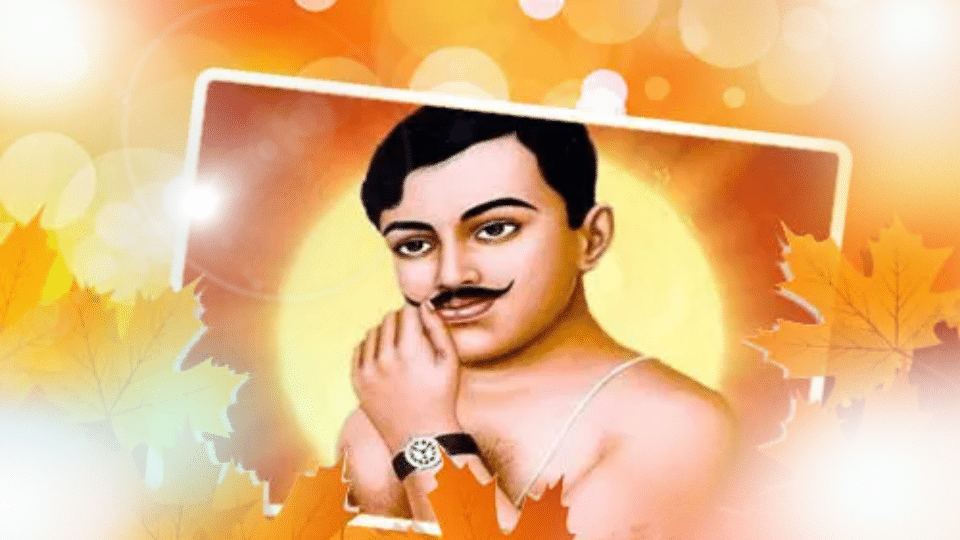Great Revolutionary Chandrashekhar Azad: Chandrashekhar Azad, a renowned freedom fighter, was born on July 23, 1906, in Bhavra village, in the Jhabua district of Madhya Pradesh. Today, Bhavra is recognized as ‘Azadnagar’ in honor of him. His father, Pandit Sitaram Tiwari, was known for his honesty, patriotism, courage, and integrity, which Chandrashekhar would inherit and embody. His mother was Jagdani Devi.
At the tender age of 14, Chandrashekhar Azad journeyed to Varanasi to study in a Sanskrit school. He first engaged in political activism here, joining Mahatma Gandhi’s Non-Cooperation Movement in 1920-21. Upon his arrest, he defiantly identified himself as ‘Azad,’ meaning free, his father’s name as ‘Swaraj,’ or self-rule, and claimed ‘Jail’ as his residence. He was sentenced to 15 lashes, but with each strike, he defiantly sang ‘Vande Mataram’ and shouted ‘Mahatma Gandhi ki jai.’

From this point onward, he was publicly recognized as Azad. As the revolutionary fervor escalated, he joined the Hindustan Socialist Army, actively participating in the Kakori Conspiracy of 1925 under Ram Prasad Bismil’s leadership. He managed to evade capture, slipping from the grasp of the police.
On December 17, 1928, Chandrashekhar Azad, Bhagat Singh, and Rajguru ambushed the Police Superintendent’s office in Lahore. When J.P. Saunders, flanked by his bodyguard, emerged on a motorcycle, Rajguru fired the initial shot, striking Saunders’ forehead and causing him to fall. Bhagat Singh then fired multiple shots, ensuring Saunders was incapacitated. When pursued by the bodyguard, Azad eliminated the threat with a well-placed shot.
Their actions were broadcast across Lahore through posters, announcing, “Lala Lajpat Rai’s death has been avenged” (“Lala Lajpat Rai ki mrityu ka badla le liya gaya hai”). This bold statement earned the admiration of Indian revolutionaries. Inspired by the Bolshevik Revolution in Russia, Azad called for a socialist revolution in 1931 at Alfred Park, Allahabad.
Azad had pledged never to be captured alive, hoping the British government would never execute him. He stayed true to this vow, sacrificing his life for his nation by shooting himself in Alfred Park on February 27, 1931.
